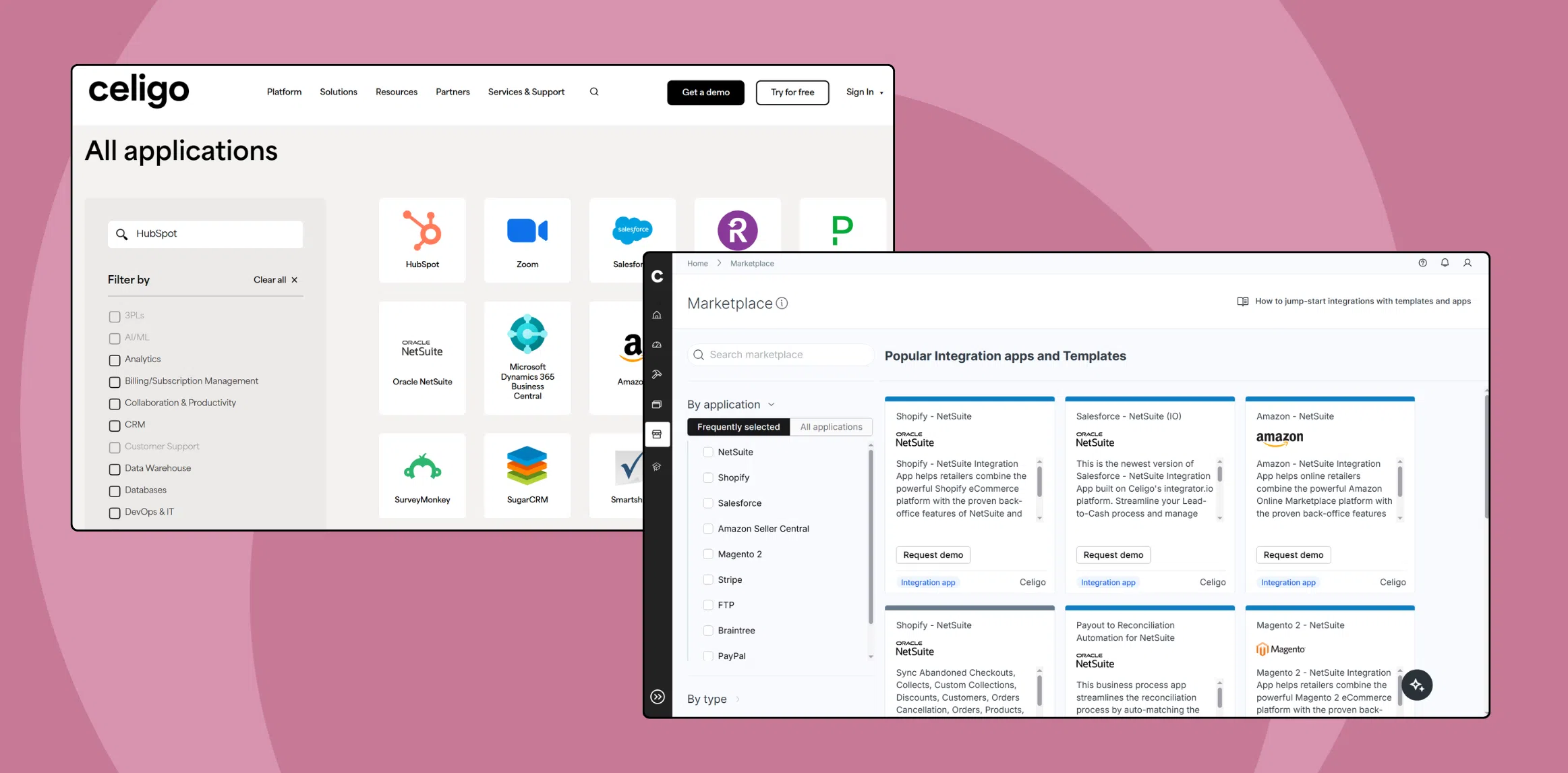Published Dec 12, 2023
A CEO’s take: Leveraging AI and iPaaS to boost productivity

Jan Arendtsz, CEO and Founder of Celigo, joined host Arman Eshraghi, CEO and Founder of embedded analytics provider Qrvey, on the “SaaS Scaled” podcast. Jan and Arman delved into increasing efficiency with workflow automations, powerful use cases for iPaaS, and leveraging AI to make better SaaS products.
You can watch or listen to the podcast here. Below, we’ve covered key highlights of their discussion.
The ROI of automation
Question: What is the difference between automation and workflows?
Answer: “You can think of what Celigo does as an integration workflow that is predominantly facilitating machines speaking to machines,” Jan explained.
Q: Should smaller organizations automate workflows? Will they gain a Return on the Investment?
A: “It’s not a question of if, it’s just a question of when. The one caveat that I will add though is ultimately, just like in anything in business or in life, you’re trying to solve a particular problem. You’re not just trying to automate these use cases and build these flows to just do something. You have a certain endgame in mind. You’re trying to solve something. As long as you’ve thought through that particular business process and the automation correctly, then 100%, it’s just a question of when you’re going to get that ROI—even though sometimes it can be complex. And that’s true 100% of the time. We’ve got more than 5,000 customers, so we see this day in, day out in various different industries and various different company sizes as well.”
No business users in the back seat
Q: Is it practical to have consultants set up automations?
A: “Roughly speaking, there are two broad iPaaS categories: first-generation iPaaS players that built their products 15 to 20 years back and next-generation platforms—which includes Celigo. Having experienced a business problem, Celigo built a product that can be used by both highly technical IT developers as well as tech-savvy business users. It is the user who knows the underlying business process that they want to automate. If you know about the process, underlying systems, and data, but you’re not technical, we don’t want you to take a back seat and just offload that to IT. We want you to be part of it.
“Now we do understand that sometimes when you’re working with APIs, it can get pretty complex fairly quickly. Our job is to dumb it down as much as possible. So the mantra that we have as a next-gen iPaaS is to say, ‘Some business users should be able to implement some use cases, not all use cases.’ And that’s the standard that we’ve really tried to drive towards, which ultimately means both IT and business users can work side by side.”
AI and machine learning aren’t coming for this job
Q: What are the impacts of expanding AI and machine learning?
A: “At a high level, I’d be hard pressed to think of any SaaS company that’s not going to be impacted by all the advances in AI and machine learning. I’ve been asked if Celigo’s integration platform as a service business will become redundant because the machines can do it. That’s not going to happen. Certainly, at least not any time soon because integration is not simple.”
AI use cases for boosting productivity
Q: What are the possible use cases for AI?
A: “For Celigo, possibilities include automated testing, error classification, and self-healing. When we talk about AI here internally, we always talk about it in two different ways.
- How can we use AI to make a better product that is going to help our users be more productive?
- How can we use AI in our business to make the business more efficient? Whether that’s using AI to write certain pieces of code that will go into the product or using AI to answer support tickets, create documentation, or write emails.
“In the end, I think writing code the way we used to is likely going to be a thing of the past. Why do it when a machine can likely write better code, which you can then review and change as needed? It’s more efficient and likely better. But again, it’s taking a larger problem and breaking it down and then using AI for the segments that make the most sense. That’s the mantra that I have right now.”
The next bold moves for Celigo
Q: Where is Celigo headed?
A: “The destination that we have is ultimately to use our strong position as a next-generation iPaaS with thousands of customers to be able to expand our reach so that we can automate any type of business process in multiple different ways.
“The lines become a little bit blurry when you talk about workflows. Ultimately, everything we do is around being able to automate business processes, not only automate but also optimize. So that’s the larger ambitious goal that we have in the next three to five years and we’re certainly working on this.”




